U.S. Geological Survey
Back to USGS Homepage
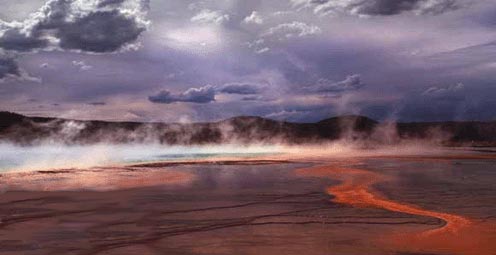
Click image above to visit site
Monitoring Yellowstone
Yellowstone National Park has experienced several hundred small earthquakes in the past few weeks. Listen to a podcast interview with Dr. Jake Lowenstern, USGS Scientist-In-Charge at the Yellowstone Volcano Observatory, about what's happening and how scientists monitor volcano and earthquake activity there.
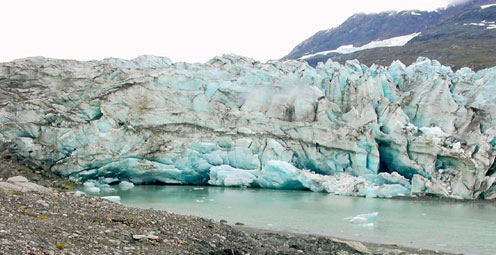
Click image above to visit site
Glaciers Changing with Climate
The inter-relationship between glaciers and climate — with a focus on the glaciers of Alaska — is the subject of a new USGS web site. Following an introduction to climate, weather, glaciers, and sea level, the web site presents a detailed look at the glaciers of Alaska.

Click image above to visit site
Low Levels of Chemicals in Drinking Water
Low levels of man-made chemicals remain in public water supplies after being treated in selected community water facilities. Most of these chemicals are unregulated in drinking water and not required to be monitored or removed.
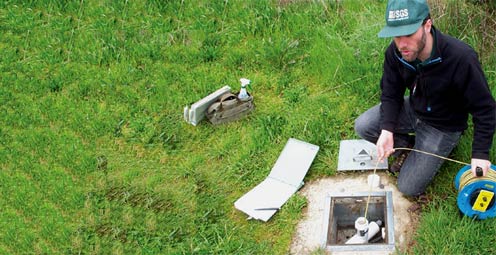
Click image above to visit site
Wells For More Than Wishing
The USGS has created a Ground-Water Climate Response Network using wells. The Network shows the effects of climate on ground-water levels in aquifers that are minimally affected by pumping or other human activities.
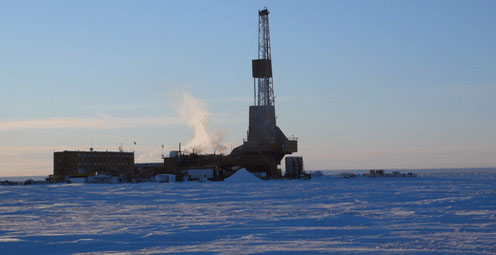
Click image above to visit site
Gas Hydrates on Alaska's North Slope
The USGS estimates that there are 85.4 trillion cubic feet of undiscovered, technically recoverable gas from natural gas hydrates on the Alaskan North Slope. This assessment is the first-ever resource estimate of technically recoverable natural gas hydrates in the world.
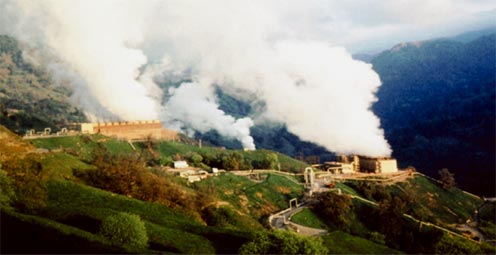
Click image above to visit site
Substantial Geothermal Energy Potential for the United States
The USGS has completed an assessment that shows greater potential for geothermal power production than is currently being used. Geothermal energy is not only a renewable resource, but could significantly contribute to the Nation's domestic energy resource base.
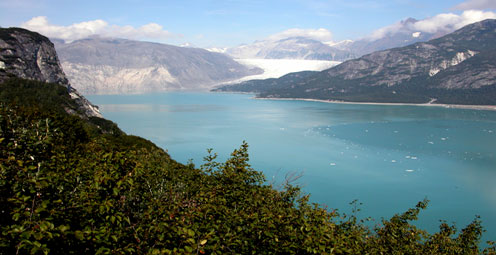
Click image above to visit site
Most Alaskan Glaciers Retreating, But a Few Advancing
More than 99 percent of Alaska’s large glaciers are retreating, and a handful, surprisingly, are advancing. USGS scientists have published details about the behavior of Alaska’s glaciers, which are responding to changes in marine and continental climates.
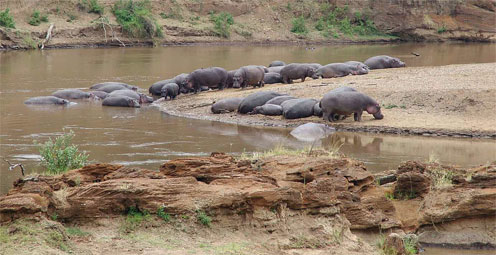
Click image above to visit site
USGS Supports Atlas of Africa
The USGS provided historical and current Landsat satellite images for the recently released Africa: Atlas of Our Changing Environment, produced by the United Nations Environmental Programme. The images vividly document environmental change across the African continent for the powerful 400-page book.
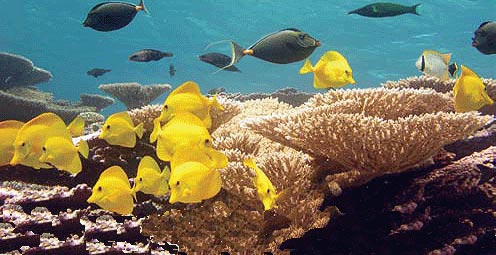
Click image above to visit site
Conserving Species with Special Science
New tools and methods help scientists reduce threats to and restore habitats of unique, endangered, and threatened plant and animal species.

Click image above to visit site
Scientists and Citizens Watch for Changes in Wildlife
Professional and citizen scientists will be working together to monitor and record seasonal wildlife events to understand and respond to climatic and other environmental changes.

Click image above to visit site
Earth Imagery: A National Treasure
The USGS is working with the National Archives and Records Administration to preserve and provide access to USGS Earth imagery and geospatial data.
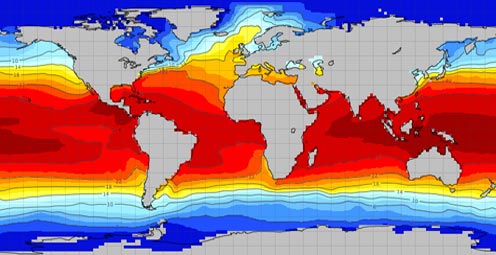
Click image above to visit site
Getting Warmer?
Past climate clues can offer insight about the future.
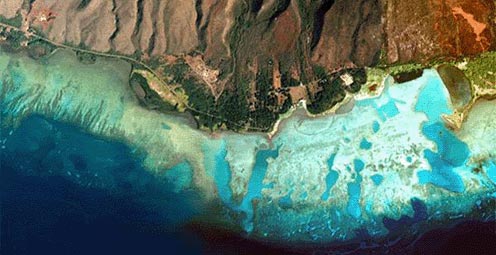
Click image above to visit site
A New Look at a Critical Problem
Coral reefs are in decline worldwide, and a leading cause is the runoff of sediment and pollutants from nearby land surfaces.
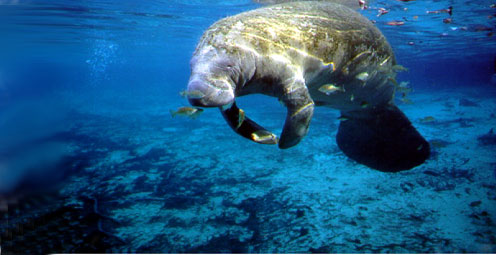
Click image above to visit site
On the Gene Scene with the USGS
The USGS helps answer genetics questions for the management of fish and wildlife, and their habitat and conservation. Visit our new Genetics and Genomics site to see the cutting-edge tools and technologies our geneticists put to work.
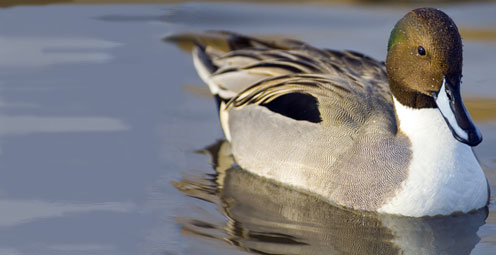
Click image above to visit site
Pinning the Tail on the Exchange of Pathogens
Scientists are using satellite telemetry, band recovery and genetic analyses to figure out where the exchange of avian-borne pathogens happens between Asian and North American migratory birds.

Click image above to visit site
President's FY 2009 Budget Request
Information, resources, and more on the President's FY 2009 Budget Request

Click image above to visit site
The Power of Observation
The United States Group on Earth Observations (USGEO) is working to connect Earth observations with public health, agriculture, climate, and data management and dissemination.

Click image above to visit site
Global Change Keeping Up With an Ever-Changing Planet
USGS studies the relationships among earth surface processes, ecological systems, understanding current changes in the context of prehistoric and recent earth processes, distinguishing between natural and human-influenced changes, and recognizing ecological and physical responses to changes in climate.
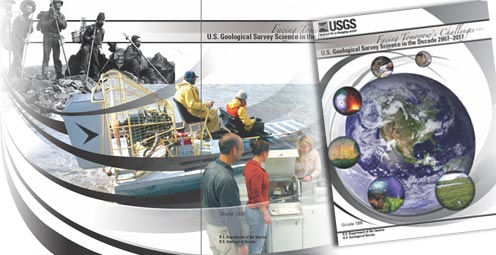
Click image above to visit site
Facing Tomorrow's Challenges
The USGS Science Strategy is a comprehensive report to critically examine the USGS's major science goals and priorities for the coming decade. The USGS is moving forward with these strategic science directions in response to the challenges that our Nation's future faces and for the stewards of our Federal lands.
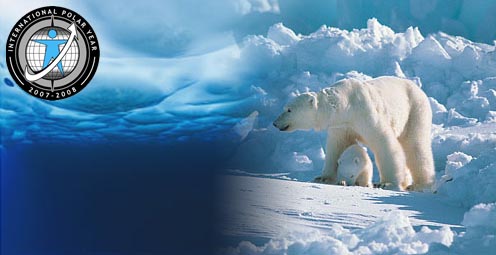
Click image above to visit site
USGS Kicks Off International Polar Year
During the International Polar Year (2007-2008), USGS will be conducting research at both poles, collecting information on polar conditions and studying their interactions with and influence on oceans, the atmosphere, land masses and ecosystems to understand current and forecast future global climate.